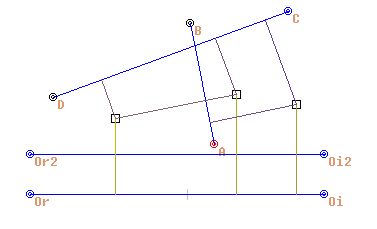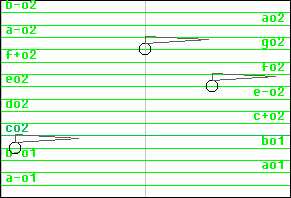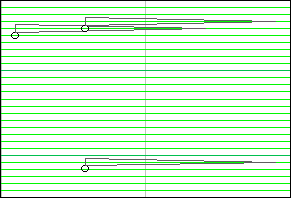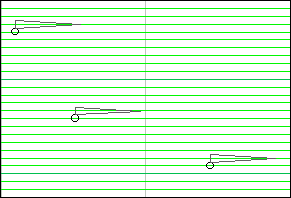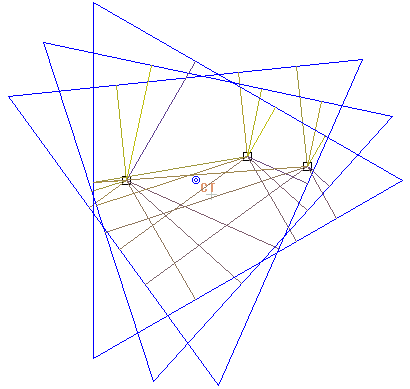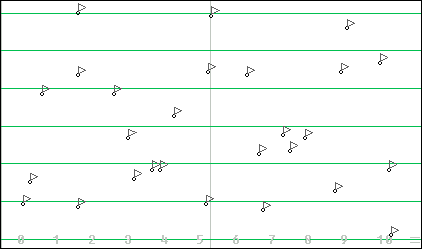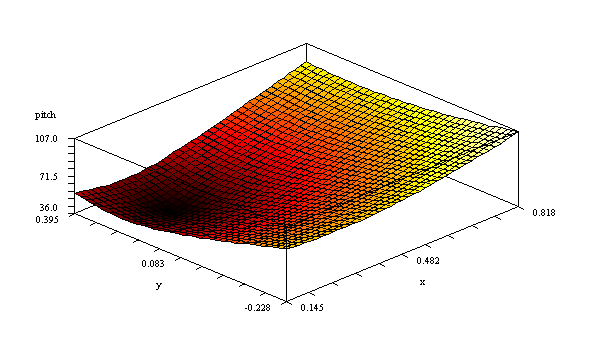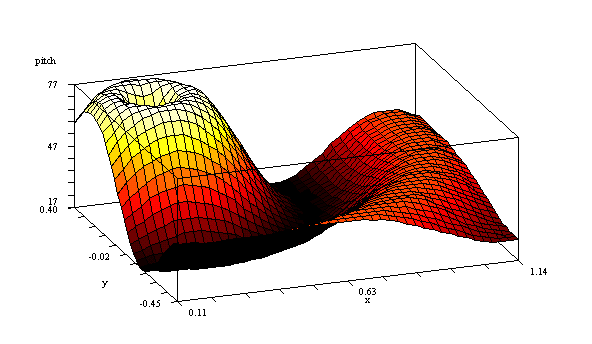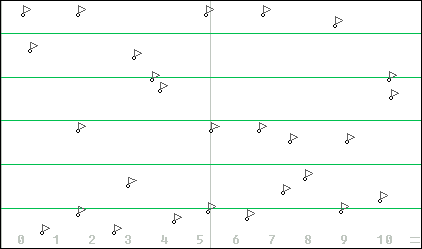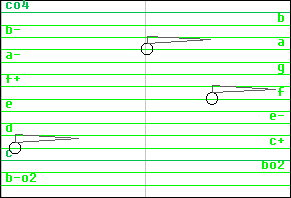
In this classic representation, the pitch of a note is proportional to is vertical position, and the time is represented by the horizontal position.
In GeoMaestro, we could represent this same set of notes like this:
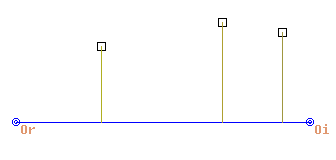
The squares are called "events". They become notes when projected on a time line, or "support" (which can be a segment or a circle)
In this example, the pitch of a projected note is proportional to the distance between the corresponding event and the support, just as in a classical representation.
